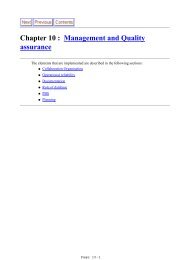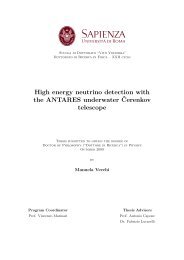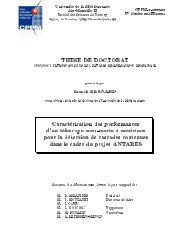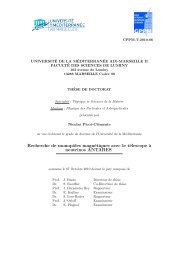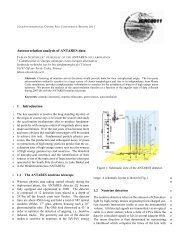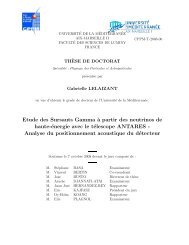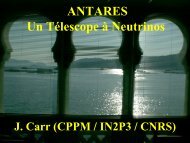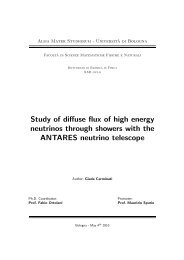Mohamad-Ziad Charif - Antares
Mohamad-Ziad Charif - Antares
Mohamad-Ziad Charif - Antares
- No tags were found...
Create successful ePaper yourself
Turn your PDF publications into a flip-book with our unique Google optimized e-Paper software.
• Take the start date of the first run in that period, and follow the Sun’s skyposition in Zenith Vs Azimuth for the first 24 hours after that date.• Take the end date of the last run in that period, and follow the Sun’s skyposition in Zenith Vs Azimuth for the last 24 hours preceding that date.• If the period includes a solstice, then the period is divided for two periodsfrom the start date to the solstice and from the solstice to the end date.• Any events found between these two boundaries are events that correspondsto positions that the Sun takes during that period (Figure 5.4). Events outsidethat region will be removed.• If the period include a solstice as indicated before, any event that is foundin the overlapping regions gets selected twice or more depending on howmany regions overlap at that position.• For different M χ we remove events that have E ν > M χ . To make sure themost energetic neutrinos in our sample can actually be a product of WIMPannihilation.• We apply for each spectrum the corresponding dNdE(Figure 5.3) to the remainingevents by re-weighting the MC events via a convolution with theeffective area of the detector.• We end up with dark matter (anti)-neutrinos for each specific period (Figures5.5& 5.6).It is interesting to note that the resulting MC file has a different livetime from theone used to generate it. The area selected by this method does not represent a fullyear but only an area with the livetime of that period.In Figure 5.5 we notice an effect where instead of having a smooth 1 eventdistribution, we find more events concentrated near the middle of the event distribution.This is due to the fact that during Autumn and Spring the Sun is found atexactly the same region of the sky. However what we see in Figure 5.6 is a slightvariation of this effect, where the geometry of the detector creates privileged 2 directionsin Azimuth (φ) where more events are reconstructed in these directionsthan others. No selection criteria were applied to Figures 5.5 and 5.6.1 Small variations are expected due to different number of reconstructed events betweenSummer-Autumn-Winter-Spring periods.2 These directions slightly changes whether there is 5, 9, 10, or 12 lines in the detector.81



